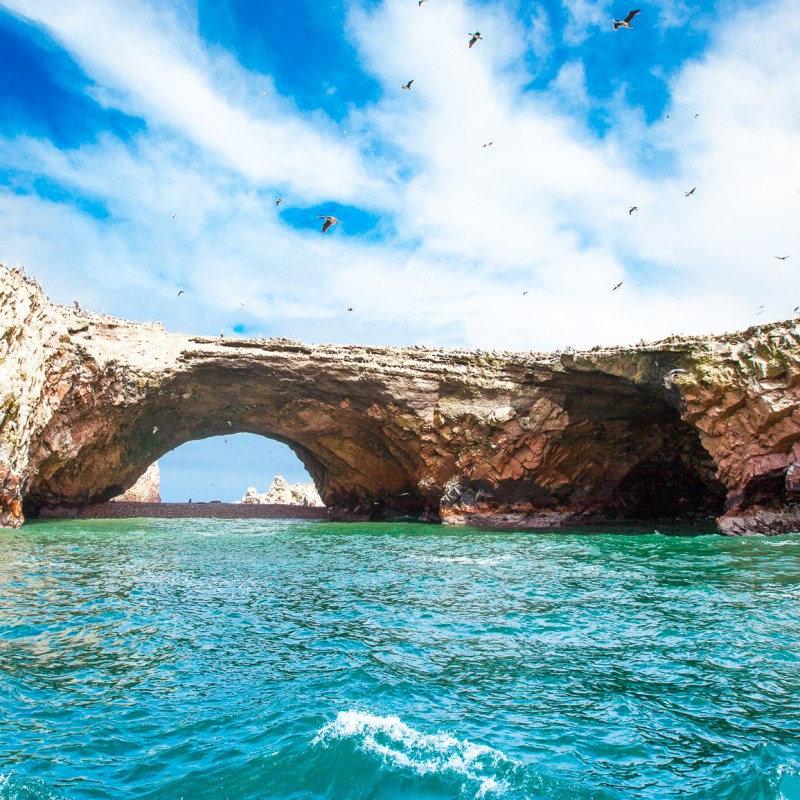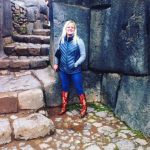
Many travelers to Peru overlook the sleepy fishing town of Paracas and the nearby Islas Ballestas and head instead to the towering Incan ruins of Cuzco’s Machu Picchu or the breathtaking expanse of Arequipa’s Colca Canyon. But insiders and locals alike know that the Paracas District is teeming with more history, natural beauty, and animal life than virtually anywhere else in the country.
Videos by TravelAwaits
The Islas Ballestas, or the Ballestas Islands, are often called the Poor Man’s Galápagos, and when you visit, you can see many of the creatures that inspired Darwin for far less than you can in Ecuador.
If you’re not sold on the Paracas District yet, here are seven reasons why you must put this Peruvian treasure on your bucket list.

1. You Can Get Up Close And Personal With Phenomenal Marine Wildlife
The Islas Ballestas are home to red-billed Inca terns, sea lions, and Humboldt penguins. To see them, take one of the tours offered from the port of Paracas, right off the main street.
These tours pride themselves on getting as close to the wildlife as possible without disturbing the creatures in their natural habitats, so make sure that you have your camera ready to capture all of those candid snaps of snoozing sea lions or waddling Humboldt penguins.
Keep in mind that you’ll be traveling for quite a bit of time on the open water. It gets chilly out there, so bring a jacket, gloves, and a hat, as well as warm shoes.
Also note that while your boat will get quite close to the wildlife of the islands, you will not be allowed onto the islands themselves. Boat tours of the area wind through the islands but do not include stops.

2. The Ancient Bluff Carvings Are Fascinating
A big bonus of your boat ride to the Islas Ballestas is the opportunity to see the Paracas Candelabra, a massive candlestick carved into the side of a bluff. As mysterious as the Nazca Lines, the Paracas Candelabra is a relic of an ancient civilization, and nobody knows quite how it was created, or why.
Several additional lines have been discovered in or near Paracas, which has led to speculation that these formations might even predate the Nazca Lines. The Andean people who once populated the seaside region near the Islas Ballestas may have actually pioneered some of the innovative techniques used to create the Nazca Lines.

3. The Ceviche Is Heavenly
Situated right on the sea, the Paracas District is known for its incredible seafood, and no dish in the area is quite as famous as the ceviche. At its purest and finest, Peruvian ceviche is a combination of freshly caught fish, lime juice, and spices. The abundance of sea life in the Paracas District makes it an ideal place to sample this delicacy.
Although the citrus juice “cooks” ceviche slightly, it’s still important to use the highest quality seafood possible to avoid any unpleasant side effects. You’ll find ceviche in Lima, Cuzco, and other Peruvian hot spots, but for the most authentic — and safest — version, opt for fish pulled right out of Paracas’s chilly Pacific waters.

4. You Can Learn About The Ancient People Of Paracas
If the Paracas Candelabra got you curious about the original people of the Paracas District, you must visit the Juan Navarro Hierro History Museum, the best place in the country to see the remains of ancient Peruvians. These skeletons have long fascinated scientists and historians because the skulls are elongated. It’s speculated that this was done to denote higher status, and like many body-modification rituals, this practice was embraced by a specific class of Andean and Inca people.
Since all of the island tours are conducted during the morning, the Juan Navarro Hierro History Museum is a great place to spend a few afternoon hours in Paracas.

5. You Can Discover Peru’s Most Crucial Export
It might not smell very good, but it is one of Peru’s most important exports. Guano, or accumulated bird droppings, is produced by the winged creatures of the Islas Ballestas as a result of their diet of oily fish. This decidedly stinky substance is a key ingredient in fertilizer and one of the most lucrative exports Peru has to offer.
Guano is so vital to the Peruvian economy that people actually harvest it from the rocks that make up the minor islands of the Islas Ballestas. The droppings are incorporated into high-quality fertilizer and shipped all over the world.
As precious as the guano is, it’s still extremely smelly, so you might want to hold your nose while traveling past some of the islands!

6. You Can Sample The Local Pisco
One of the most bitter rivalries between Peru and neighboring Chile is the battle over which country invented pisco. Although you’ll have to travel to Santiago to get the Chilean take, you can drink authentic Peruvian pisco in the Paracas District.
There are plenty of pisco vineyards in the desert around Paracas, the most famous of which is El Catador. The vineyard offers a tour, a crash course in appreciating pisco, and a restaurant that pairs fine Peruvian cuisine with the favorite national beverage. There are plenty of vineyard tours that make pit stops at El Catador that leave straight from Paracas and can pick you up at your hotel.
You don’t have to venture too far from the sea to sample pisco, though. Artisanal pisco and pisco-related drinks are on menus all over Paracas.

7. They’re Easily Accessible
If you’re flying into Peru, you’re likely landing in Lima. Lima is the cosmopolitan coastal capital of Peru, a city overflowing with nightlife, culinary delights, and plenty of eye-popping street art along the winding calles of Barranco.
Paracas and the Islas Ballestas are a mere 3 or 4 hours from Lima, making a quick overnight visit from the big city a breeze. There are plenty of ways to get to the Paracas District from Lima, but the easiest and most comfortable is with a company like Peru Hop. Peru Hop picks you up at your hotel and takes you straight into the city center of Paracas. The guides speak both English and Spanish.
There are public bus options as well, or you could rent a car. The gorgeous view of the coast as you cruise along is worth the trip!

What To Know Before You Go
Paracas might be located by the Pacific Ocean, but it is surrounded by desert. Bring plenty of sunscreen, even if you go when the weather is colder. Being in the Southern Hemisphere, the area is chilliest during the months of June, July, August, and September, so be prepared for unpredictable days and cold nights if you travel during this time.
Observe proper ATM safety, especially at night. When possible, visit an ATM that is inside of a bank branch, or one in a well-lit area. Paracas, like most cities, has occasional problems with crimes of opportunity.
The animals of the Islas Ballestas might be used to humans, but it’s not a good idea to try to interact with any of them. Just like us, the sea creatures of these islands need their personal space!
Enjoy this off-the-beaten-path slice of Peru and all it has to offer before this seaside treasure hits the tourist radar.


